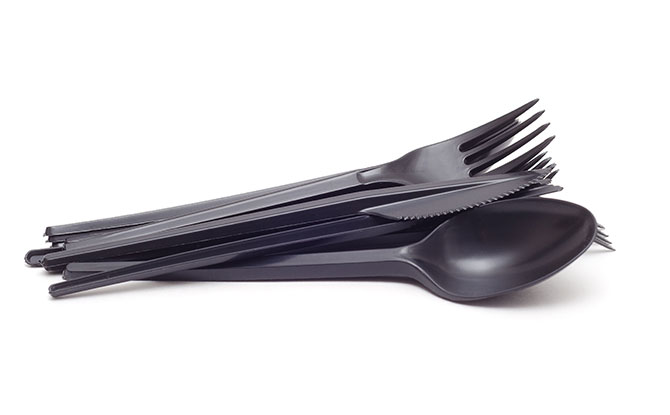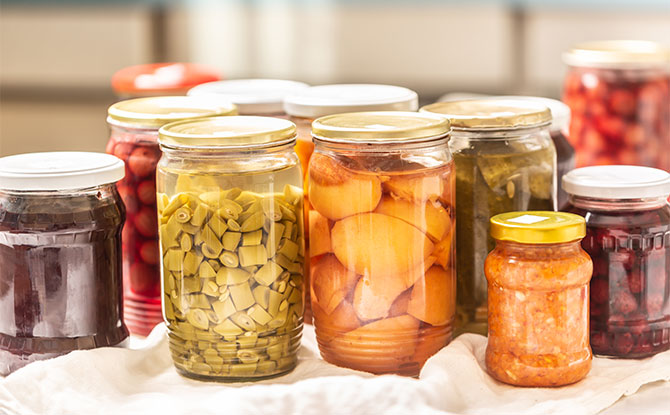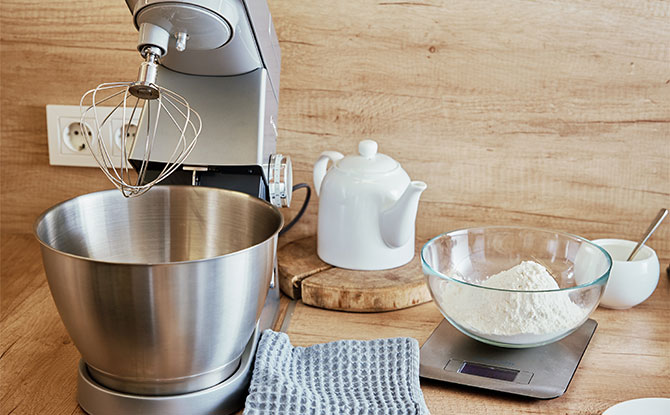Welcome to the world of zero waste living! In this article, I will guide you through the steps to create a sustainable and waste-free kitchen. Embracing a zero waste lifestyle is crucial for protecting the environment and our health. Did you know that billions of tons of single-use plastic are discarded every year? By reducing waste through practical strategies, we can make a significant difference and contribute to a more sustainable future.
Understanding the Importance of Zero Waste Kitchen
The world is currently facing a waste crisis, with billions of tons of single-use plastic discarded each year, causing significant damage to our environment. Embracing a zero waste kitchen and living a sustainable lifestyle is crucial for protecting the environment and our health. By reducing waste through strategies such as refusing single-use kitchen items, avoiding excessive packaging, and choosing reusable alternatives, we can make a significant difference.
Reducing food waste is another important aspect of a zero waste lifestyle. When food is wasted, not only are valuable resources such as water, land, and energy wasted, but the greenhouse gas emissions produced during its production and transportation go to waste as well. By being mindful of our food consumption, properly storing leftovers, and utilizing meal planning and prepping techniques, we can reduce food waste and save both money and the environment.
While minimizing waste in the kitchen is important, it’s also essential to consider the broader impact of our food choices. Adopting a plant-based diet can have a profound effect on reducing our carbon footprint. The livestock industry is a significant contributor to greenhouse gas emissions, deforestation, and water pollution. By incorporating more plant-based meals into our diets, we can help address these environmental issues and promote a more sustainable future.
Refusing Single-Use Kitchen Items

Say goodbye to single-use items in your kitchen by opting for reusable alternatives and embracing a plastic-free lifestyle. Plastic waste is a major contributor to environmental pollution, with millions of tons of plastic ending up in landfills and oceans each year. By making simple changes in our daily lives, we can significantly reduce our plastic footprint and create a more sustainable kitchen.
Start by swapping out disposable utensils, straws, and plates for durable, reusable options made from materials like stainless steel or bamboo. Not only are these alternatives more eco-friendly, but they can also add a touch of style to your kitchen. Replace plastic wrap with beeswax wraps or reusable silicone food covers to keep your leftovers fresh without contributing to plastic waste.
If you’re a coffee or tea lover, invest in a reusable mug or thermos and say goodbye to disposable cups. Many coffee shops offer discounts to customers who bring their own cups, making it a win-win for your wallet and the environment. Additionally, consider using cloth napkins instead of paper ones, and choose glass or stainless steel containers for storing food instead of disposable plastic bags or containers.
Refusing single-use kitchen items is a powerful step towards a plastic-free kitchen and a more sustainable lifestyle. By embracing reusable alternatives and reducing our reliance on plastic, we can make a positive impact on the environment and inspire others to do the same.
Avoiding Excessive Packaging

Let’s reduce our impact on the planet by being mindful of the packaging we bring into our homes and making conscious choices to minimize waste. Excessive packaging is a major contributor to environmental pollution and waste. From plastic clamshell containers to layers of plastic wrap, packaging materials often end up in landfills or polluting our oceans. By adopting eco-friendly practices in the kitchen, we can significantly reduce our carbon footprint and contribute to a more sustainable future.
To avoid excessive packaging, one simple step is to shop in bulk. By purchasing items like grains, pasta, and spices in bulk, you can bring your own reusable bags or containers, eliminating the need for individual packaging. Look for stores that offer bulk options and bring your own produce bags and jars to fill up with your desired quantities. This not only reduces waste but also saves money in the long run.
Another way to minimize packaging waste is to consciously choose products with minimal packaging. Opt for items that come in recyclable or compostable packaging, or even better, choose products that have no packaging at all. When grocery shopping, consider buying fresh produce from local farmers’ markets, as they often have less packaging compared to supermarket produce. Additionally, seek out alternative packaging materials such as glass, metal, or paper, which can be recycled or reused.
Proper Food Storage for Minimal Waste

Keeping food fresh and minimizing waste starts with proper storage practices in your kitchen. By following these simple tips, you can reduce food waste and contribute to a zero waste kitchen.
Organize Your Pantry
Start by organizing your pantry, grouping similar items together and placing older items at the front for easy access. This way, you can easily see what you have and avoid buying duplicate items, reducing the chances of food going unused and expiring.
Use clear storage containers or jars to store dry goods like grains, pasta, and nuts. Not only does it keep them fresh and prevent moisture from spoiling them, but it also eliminates the need for single-use packaging.
Utilize Reusable Storage Containers
Invest in a set of high-quality, reusable storage containers. These containers are perfect for storing leftovers, prepped ingredients, and bulk purchases. Opt for glass or stainless steel containers, as they are durable and do not leach harmful chemicals into your food like plastic containers do.
To further reduce waste, consider using beeswax wraps or silicone food covers instead of plastic wrap. These eco-friendly alternatives are reusable and help keep your fruits, vegetables, and other perishables fresh.
Maximize Your Refrigerator and Freezer Space
Make the most of your refrigerator and freezer space by properly arranging your items. Keep perishable items, such as dairy and meats, in the coldest parts of the refrigerator to ensure they stay fresh for longer.
Freezing food is also an effective way to extend its shelf life. Consider freezing leftover meals, fruits, and vegetables before they spoil. Just remember to label and date your frozen items to avoid confusion.
By implementing these proper food storage practices, you can drastically reduce food waste in your kitchen and contribute to a more sustainable way of living. Remember, every small step towards a zero waste kitchen counts and adds up to make a big difference for our planet.
Meal Planning and Prep for Efficiency
Save time, money, and reduce food waste by incorporating meal planning and prep into your weekly routine. Meal planning allows you to thoughtfully consider your meals for the week ahead, ensuring that you have all the necessary ingredients on hand and reducing last-minute trips to the grocery store. By taking a little time to plan out your meals, you can also save money by buying only what you need and avoiding impulse purchases.
To start, choose a day of the week to plan your meals and create a shopping list. Consider your schedule and preferences, and try to include a balance of nutritious recipes that you enjoy. Once you have your plan in place, spend some time prepping ingredients ahead of time. Chop vegetables, portion out ingredients, and prepare any sauces or dressings that you’ll need. This not only saves time during the week but also reduces the chances of food spoilage since you’ll have everything ready to go.
Having prepared meals and ingredients also makes it easier to resist the temptation of ordering takeout or grabbing convenience foods when you’re short on time. Additionally, meal planning and prep allow for more mindful and intentional eating, supporting healthier choices and reducing food waste. Leftovers can be used for future meals or frozen for later use, ensuring that no food goes to waste. By incorporating these practices into your routine, you’ll not only streamline your week but also contribute to a waste-free kitchen and a more sustainable lifestyle.
The Power of a Plant-Based Diet
Transitioning to a plant-based diet can have a significant positive impact on the environment and support your zero waste journey. By eliminating or reducing animal products from your meals, you can reduce greenhouse gas emissions, conserve water, and minimize land use. Livestock agriculture is a major contributor to climate change, and by choosing plant-based options, you’re choosing a more sustainable way of eating.
Plant-based diets also align perfectly with the principles of zero waste living. By focusing on whole foods, fruits, vegetables, grains, legumes, and nuts, you’re minimizing packaging waste and reducing your reliance on single-use plastic. Additionally, plant-based meals can be easily prepared in bulk, reducing food waste and saving time and money.
Not only is a plant-based diet environmentally friendly, but it’s also beneficial for your health. Plant foods are rich in essential nutrients, fiber, and antioxidants, which can support overall well-being and help prevent chronic diseases. By choosing plant-based options, you’re not only making a positive impact on the planet but also on your own health.
The Transition to Plant-Based Living
Transitioning to a plant-based diet doesn’t have to be overwhelming. Start small by incorporating more plant-based meals into your routine. Experiment with new recipes, explore different cuisines, and get creative with flavorful plant-based ingredients. Gradually reducing your consumption of animal products and replacing them with plant-based alternatives can make the transition easier and more sustainable in the long run.
Remember to focus on balance and variety in your meals to ensure you’re getting all the necessary nutrients. Incorporate a variety of fruits, vegetables, whole grains, legumes, nuts, and seeds into your diet. You can also seek guidance from registered dietitians or plant-based communities for support and advice along your journey.
By embracing a plant-based diet, you’re not only making a positive impact on the environment but also fostering a healthier way of living. So, let’s start incorporating more plant-based meals into our lives and contribute to a sustainable future.
Creating a Resource and Energy-Efficient Kitchen
Let’s make our kitchens more environmentally friendly by implementing resource and energy-saving practices. By reducing our energy consumption and optimizing the use of resources, we can significantly contribute to a sustainable kitchen.
One of the most effective ways to achieve a resource-efficient kitchen is by conserving water. Simple actions, like fixing leaky faucets and using water-saving appliances, can make a significant difference in reducing water wastage. Additionally, consider collecting and reusing greywater for activities such as watering plants or cleaning.
Another aspect of a green kitchen is minimizing energy consumption. Opt for energy-efficient appliances that have a high energy star rating, which indicates their efficiency in utilizing energy. Switch to LED bulbs for lighting, as they consume less energy and have a longer lifespan compared to traditional light bulbs. Consider utilizing natural light during the day to reduce the need for artificial lighting.
When it comes to resource efficiency, choosing sustainable kitchen appliances and fixtures is key. Look for appliances that are energy-efficient and have eco-friendly features, such as refrigerators with advanced insulation and water-saving dishwashers. Consider installing low-flow faucets and dual-flush toilets to conserve water. Additionally, opt for sustainable materials for your kitchen countertops, cabinets, and flooring, such as bamboo or reclaimed wood.
By implementing these resource and energy-saving practices, we can create a greener and more sustainable kitchen. Let’s make conscious choices to minimize our impact on the environment and work towards a more sustainable future.
Long-Lasting Kitchen Tools

Make a conscious choice for a zero waste kitchen by selecting high-quality, long-lasting kitchen tools and eco-friendly personal care products. Investing in durable, sustainable kitchen tools not only reduces waste but also saves money in the long run. Opt for stainless steel or glass containers instead of plastic ones, as they are more durable and can be used for years. Look for utensils, such as bamboo or stainless steel, which are not only eco-friendly but also resistant to wear and tear. By choosing these long-lasting alternatives, you can reduce the need for frequent replacements and contribute to a more sustainable kitchen.
Mindful Consumption for a Greener Kitchen
In addition to choosing long-lasting kitchen tools and eco-friendly personal care products, practicing mindful consumption is key to maintaining a greener kitchen. Before making a purchase, ask yourself if the item is truly necessary. Avoid impulse buying and opt for items that serve multiple purposes or can be easily repaired. By adopting a mindful approach to consumption, we can reduce waste and minimize our impact on the environment. Consider repairing or repurposing items instead of throwing them away, and explore second-hand options for kitchen tools and appliances.
Creating a sustainable and eco-friendly kitchen is a journey that requires conscious choices and a commitment to reduce waste. By selecting high-quality, long-lasting kitchen tools and eco-friendly personal care products, practicing mindful consumption, and exploring second-hand options, we can make a significant difference in creating a more sustainable future. Each small change we make in our daily lives contributes to a larger movement towards a zero waste lifestyle. Together, we can build a greener and more sustainable world, starting right in our own kitchens.
Community Involvement and Advocacy
Together, we can make a bigger impact by getting involved in our communities and advocating for a more sustainable future. By connecting with like-minded individuals and organizations, we can amplify our efforts and inspire others to join us on this journey towards mindful consumption and sustainable living.
One way to get involved is by supporting local initiatives that promote sustainable practices. This could mean participating in community clean-up events, volunteering at farmer’s markets or community gardens, or attending workshops and classes on waste reduction and eco-friendly living. By actively engaging in these activities, we not only contribute to the betterment of our communities but also learn and adopt new strategies for sustainable living.
Advocacy is another powerful tool for driving change. We can use our voices to raise awareness about the importance of sustainable living and the impact of our choices on the environment. This can be done through social media platforms, writing letters to local representatives, or participating in peaceful protests and rallies. By advocating for policies and practices that prioritize sustainability, we can create a collective impact and inspire others to take action.
Remember, sustainable living is a journey, and every step counts. Together, we can build a greener, healthier future for ourselves and the generations to come. Let’s unite, get involved in our communities, and advocate for a more sustainable world.
Tracking Progress and Celebrating Achievements
Keep track of your zero waste efforts and celebrate the milestones, big and small, as you create a more sustainable lifestyle. Monitoring your progress is not only a way to measure your success, but it also helps to keep you motivated along your journey. Whether it’s reducing your food waste, refusing single-use items, or adopting eco-friendly practices, every small step counts towards making a positive impact.
Consider setting goals for yourself and tracking how well you are meeting them. This could be as simple as aiming to reduce your weekly household waste by a certain percentage or trying to buy only unpackaged produce. By setting achievable goals, you can continually challenge yourself while also celebrating your achievements.
If you find it helpful, create a record of your progress. This could be in the form of a journal or a spreadsheet where you can document the changes you’ve made and the positive outcomes you have experienced. Reflecting on your journey can be inspiring and help you stay focused on your ultimate goal of living a zero waste lifestyle.
In addition to tracking your own progress, consider sharing your achievements with others. You may inspire friends, family, and even your community to join you on this sustainable living journey. By creating a supportive network of like-minded individuals, you can exchange ideas, share tips, and collectively work towards a more sustainable future.
Conclusion: A Sustainable Future Starts in the Kitchen
Building a zero waste kitchen and living a sustainable lifestyle is within our reach, and by implementing these tips, we can create a better, healthier, and more sustainable future for ourselves and the planet. Embracing a zero waste kitchen is crucial for protecting the environment and our health. Every year, billions of tons of single-use plastic end up in landfills and our oceans, causing irreparable damage to ecosystems and harming wildlife.
To make a significant difference, we must start by refusing single-use kitchen items and embracing alternatives that are more eco-friendly. By avoiding excessive packaging and opting for bulk shopping and reusable bags, we can reduce waste and minimize our carbon footprint. Proper food storage techniques, such as organizing our pantry and using reusable storage containers, also play a crucial role in minimizing food waste and saving money.
Adopting a plant-based diet is another powerful step towards a zero waste kitchen. Animal agriculture is a major contributor to greenhouse gas emissions and deforestation. By incorporating more plant-based meals, we not only reduce our environmental impact but also improve our health. Additionally, creating a resource and energy-efficient kitchen, investing in long-lasting kitchen tools, and making eco-friendly personal care choices are all essential aspects of a sustainable lifestyle.
However, creating a sustainable future is not just an individual effort. It requires community involvement and advocacy. Getting involved in local initiatives, supporting sustainable businesses, and advocating for systemic change are all ways we can contribute to a zero waste lifestyle. It’s also important to track our progress, set goals, and celebrate achievements along our zero waste journey. By making small changes and conscious choices, we can make a positive impact and create a more sustainable future for ourselves and generations to come.

